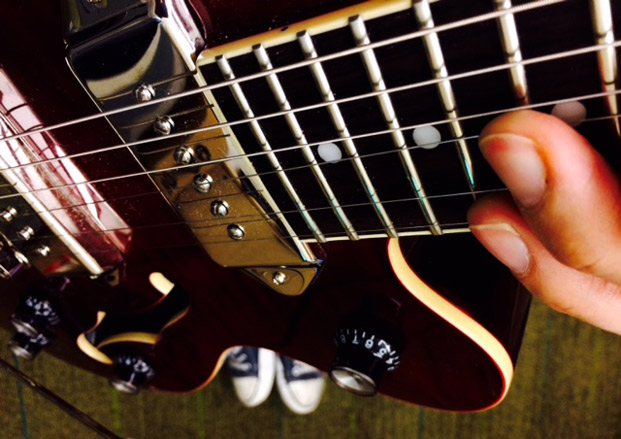Applying Diatonic Substitution in Rock and Metal Guitar

Hey, this is Shawn McGovern again. Thank you for all your interest in my last column, “Applying Altered Dominant Scale In Metal.”
This time, I'd like to discuss a musical device known as diatonic substitution and how it may be used in a rock or metal context in regards to the guitar. Diatonic substitution is simply swapping one chord for another in the same key.
The word diatonic is defined as involving only notes contained in the prevailing key without the use of accidentals.
In layman's terms, this means only using notes of a particular key or scale. To demonstrate this concept, let's use the key of A minor. The notes of the A minor scale are A, B, C, D, E, F and G. If we intend to use diatonic substitution for an A minor chord (spelled A, C, E), we could use an A Minor 7 chord instead (spelled A, C, E, G). This is a simple form of diatonic substitution.
This lesson is concerned with using diatonic substitution to create interesting solos and melodic lines over common chord progressions. As you may know, in the rock or metal genre a common chord progression is I minor, flat VI major, followed by flat VII major.
In the key of E minor, this gives us E minor, C major and D major. It is very typical for metal guitarists to create melodic lines with the corresponding arpeggios; E minor arpeggio over E minor etc. Following chord progressions with these triad-based arpeggios sounds cool, but like any overused device it can get stale really fast!
I like to employ diatonic substitution in the form of creating chord extensions by using common arpeggios based on other chord tones besides the root. An easy example is using a G major arpeggio over an E minor chord. G is the third of E minor and the notes of G major are G, B and D. By superimposing those notes over an E minor chord we are now implying an E minor 7 harmony.
All the latest guitar news, interviews, lessons, reviews, deals and more, direct to your inbox!
This idea can add an extra dimension to your soloing because of the richness of the new harmony, especially in power-chord-based rock, where our ears are bludgeoned with roots and fifths and starved of harmony. Another added bonus to this approach is the elimination of the root of the chord in your arpeggio-based line, which I believe adds a new level of sophistication and unpredictability to your soloing.
Another cool perk to using this device will come in handy for all you monster sweep pickers out there, as it is much easier to rip a conventional triad arpeggio at 600 bpm than the full extension you are implying.
Diatonic substitution can also be used for modal music, as superimposing arpeggios over a one-chord vamp can spell out some of the identifying notes of a particular mode. For example, if we wanted to improvise over a C major or C major 7 chord and create a Lydian modality, we could play an arpeggio based on the fifth of the chord G major 7. A G major 7 arpeggio is spelled out G, B, D, and F sharp. Now we have the fifth, major seventh, ninth and sharp 11th respectively, thus laying out the notes of C Lydian.
Thank you again for your interest in my blog. Keep shredding thoughtfully!
Shawn McGovern is a GIT graduate and sought-out guitar instructor in Providence, Rhode Island, and Los Angeles and may be contacted through his site, shawnmcgovern.com.
